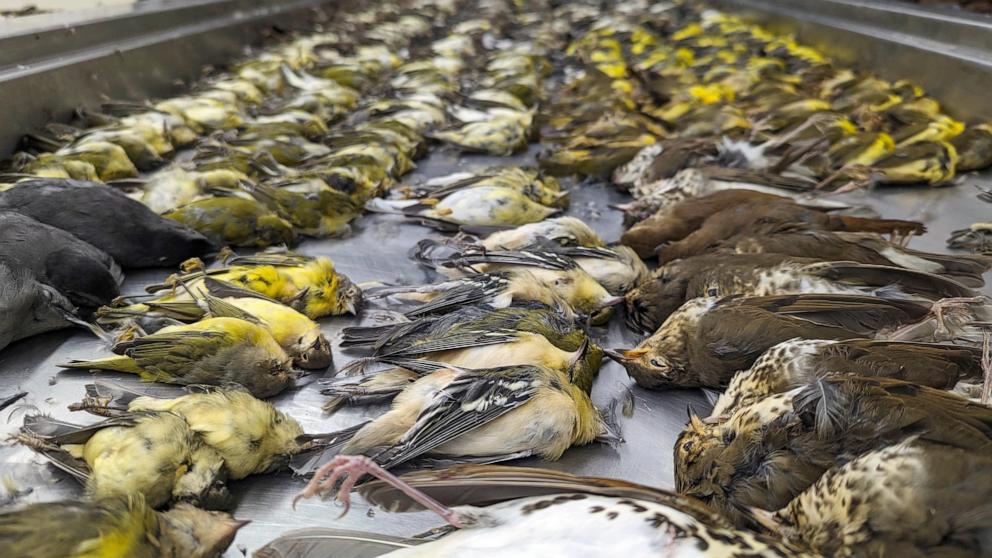Chicago Exhibition Center modifies its windows to prevent bird strikes after many birds were killed last year

An exhibition center on Chicago’s lakefront is modifying its windows to prevent bird strikes after hundreds of birds flew into the building in one night last fall
CHICAGO — An exhibition center on Chicago’s lakefront has launched a $1.2 million bird strike prevention effort after hundreds of songbirds flew into the building one night last fall.
The McCormick Place Lakeside Center began installing a film with tiny dots on its windows in June, the Chicago Tribune reported. The dots are designed to help birds distinguish between windows and nature. The work is expected to be completed in early September, in time for the fall bird season.
Nearly 1,000 songbirds en route south died in one night last October after crashing into the center’s 180-meter-long windows. Bird experts say the deaths were the result of a confluence of factors, including optimal migration conditions, rain, and the lighting and window-lined walls of the low-ceilinged exhibit hall.
Researchers estimate that hundreds of millions of birds die each year in the United States from collisions with windows. Birds do not see clear or reflective glass and do not understand that it is a deadly barrier. When they see plants or bushes reflected through or in windows, they fly toward them, killing themselves in the process.
Birds that migrate at night, such as sparrows and warblers, use the stars for guidance. Bright lights from buildings both attract and confuse them. This can cause them to crash into windows or fly around the lights until they die of exhaustion – a phenomenon known as fatal light attraction.
In New York City, the two beams of light symbolizing the World Trade Center are temporarily turned off during the annual September 11th remembrance ceremony to prevent birds from becoming trapped in the light shafts.
The National Audubon Society launched a program called “Lights Out” in 1999 to encourage downtowns to turn off or dim lights during migration months. Nearly 50 cities in the U.S. and Canada have joined the movement, including Chicago, Toronto, New York, Boston, San Diego, Dallas and Miami.


